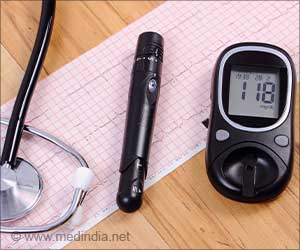Discover how Anumana's AI algorithm is revolutionizing early detection of pulmonary hypertension using ECG data.

Artificial intelligence for early prediction of pulmonary hypertension using electrocardiography
Go to source).
‘Early PH diagnosis with AI: Detects up to 5 years in advance! #medicaltechnology #healthcareinnovation #medindia’





Advertisement
AI Algorithm Shows Promise in Early Detection of Pulmonary Hypertension
Published in the European Respiratory Journal, the study titled "An electrocardiogram-based AI algorithm for early detection of pulmonary hypertension" highlights the breakthrough potential of Anumana's PH Early Detection Algorithm (PH-EDA). Dr. Hilary DuBrock from Mayo Clinic, co-first author of the study, emphasized its non-invasive approach in detecting PH, crucial for patients facing prolonged diagnostic journeys.PH involves elevated pressure in lung blood vessels, exerting strain on the heart. Symptoms like fatigue and breathlessness, common in various conditions, often obscure timely diagnosis, necessitating invasive tests. Diagnostic delays, averaging more than two years post-symptom onset, significantly impact patient outcomes.
Advertisement
Role of ECG in Hypertension Detection
ECG, a routine noninvasive test assessing heart electrical activity and structure, is widely accessible in primary care and emergency settings. Anumana's PH-EDA leverages this accessibility, integrating data from over 6 million patient records and 8 million ECGs, enhancing predictive accuracy.Researchers analyzed data from over 39,823 PH-likely patients and 219,404 controls at Mayo Clinic, confirming results in an additional cohort from Vanderbilt. The algorithm demonstrated robust diagnostic ability, achieving an Area Under the Curve (AUC) of 0.92 and 0.88 in respective datasets. Notably, it identified potential PH up to five years before diagnosis, underscoring its predictive power.
Advertisement
Future Directions of Pulmonary Hypertension Diagnosis
Maulik Nanavaty, CEO of Anumana, highlighted the algorithm's potential to expedite PH diagnosis and improve patient outcomes globally. FDA recognition of PH-EDA as a breakthrough device reflects its transformative impact in managing life-threatening diseases. Ongoing clinical validation seeks to integrate PH-EDA into routine clinical practice, aligning with Anumana's mission to revolutionize cardiac care.AI-driven PH Early Detection Algorithm signifies a significant advancement in medical technology, offering clinicians a tool to detect PH early and intervene promptly. By harnessing the power of AI and ECG data, Anumana aims to enhance diagnostic precision, mitigate diagnostic delays, and ultimately improve the prognosis for patients with PH worldwide.
Reference:
- Artificial intelligence for early prediction of pulmonary hypertension using electrocardiography - (https://www.jhltonline.org/article/S1053-2498(20)31516-3/abstract)
Source-Medindia














